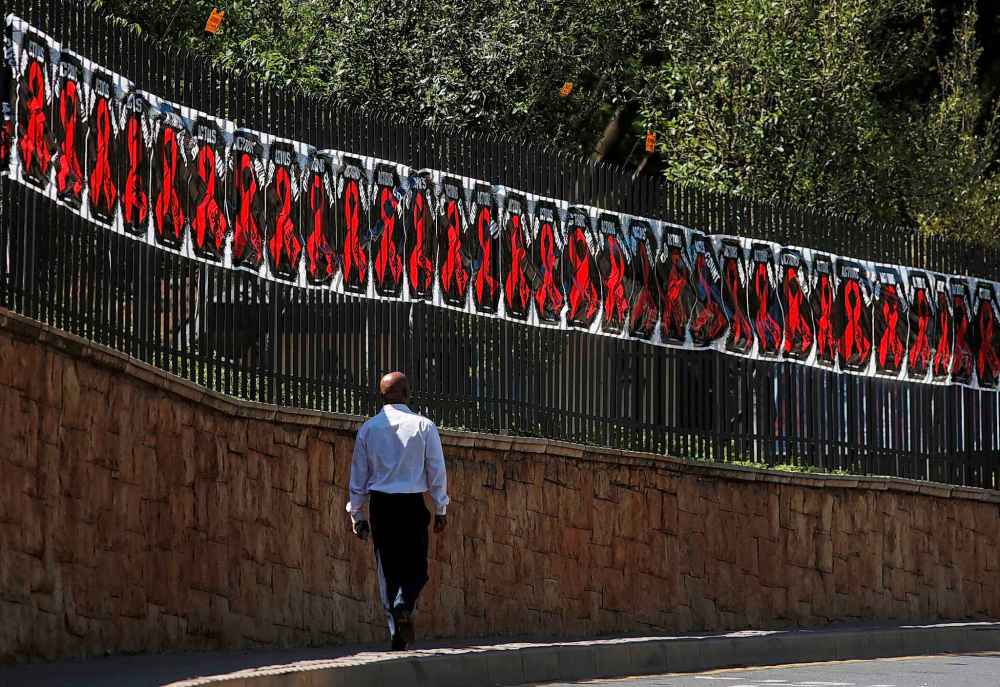Gaps remain in province’s HIV plan
Read this article for free:
or
Already have an account? Log in here »
To continue reading, please subscribe:
Monthly Digital Subscription
$0 for the first 4 weeks*
- Enjoy unlimited reading on winnipegfreepress.com
- Read the E-Edition, our digital replica newspaper
- Access News Break, our award-winning app
- Play interactive puzzles
*No charge for 4 weeks then price increases to the regular rate of $19.00 plus GST every four weeks. Offer available to new and qualified returning subscribers only. Cancel any time.
Monthly Digital Subscription
$4.75/week*
- Enjoy unlimited reading on winnipegfreepress.com
- Read the E-Edition, our digital replica newspaper
- Access News Break, our award-winning app
- Play interactive puzzles
*Billed as $19 plus GST every four weeks. Cancel any time.
To continue reading, please subscribe:
Add Free Press access to your Brandon Sun subscription for only an additional
$1 for the first 4 weeks*
*Your next subscription payment will increase by $1.00 and you will be charged $16.99 plus GST for four weeks. After four weeks, your payment will increase to $23.99 plus GST every four weeks.
Read unlimited articles for free today:
or
Already have an account? Log in here »
Hey there, time traveller!
This article was published 30/11/2018 (2565 days ago), so information in it may no longer be current.
When World AIDS Day was first observed on Dec. 1, 1988, it was near the end of a decade marked by fear, misinformation and prejudice.
Little was understood about acquired immune deficiency syndrome, or AIDS, the syndrome caused by a virus called human immunodeficiency virus, or HIV. People thought it was a disease that only affected gay men, ignorance that acted as an accelerant for raging fires of homophobia. Many gay activists from that era recall attending funerals for their friends on a weekly basis. Poorly understood, too, was how it was spread; public awareness campaigns had to convince people that you couldn’t catch it from holding hands, or from a toilet seat. Those suffering often suffered alone and in silence.

Thirty years on, we understand much more about HIV/AIDS — which has lead to advances in prevention, medication and treatment. As of 2016, approximately 36.7 million people are living with HIV globally, with sub-Saharan Africa being the region most affected.
But HIV/AIDS isn’t an issue that exists an ocean away — nor is it an issue that has gone away, even when it’s not in the public health spotlight. Across Canada, some 63,000 people live with HIV, including 1,318 in Manitoba. And that number is rising. Per the Annual Statistical Update from Manitoba Health released in January, Manitoba had one of the highest reported diagnosis/incidence rates of new HIV cases among the provinces and territories.
In Winnipeg, Nine Circles Community Health Centre is one of two Winnipeg-based sites, along with the Health Sciences Centre outpatient clinic, that delivers the Manitoba HIV Program, which provides information, specialized care, treatment and support to those who are living with HIV in our province. According to the Manitoba HIV Program’s 2017 report, 95 people entered care in 2017 — 67 per cent newly diagnosed with HIV, 66 per cent identifying as male and 34 per cent identifying as female.
Of that, 46 per cent self-reported they acquired HIV via heterosexual sex, 27 per cent said via sex between men and 18 per cent said via injection drug use. A disproportionate number of Indigenous and African/Caribbean/black-identifying people have entered care. Stigma and discrimination remain barriers to testing and treatment, and still lead to social exclusion.
While the report finds that Manitobans do well once diagnosed and entered into the Manitoba HIV Program, troubling gaps in care still remain in this province.

The report recommends routine HIV testing, which could lessen the stigma associated with testing and help people get diagnosed sooner — or at all. One in five Canadians infected with HIV doesn’t know they have it.
The report also recommends free, universal coverage of HIV medication in Manitoba. Half of those who entered into care with the Manitoba HIV program in 2017 had no insurance coverage at all, had co-pays to consider or were on insurance plans with finite terms. And that can be a big problem: delays or interruptions in treatment can lead to poorer health outcomes.
Data can be helpful in determining such gaps and, hopefully, result in policy changes. But behind those numbers are real people living real lives. World AIDS Day — and Aboriginal AIDS Awareness Week (Dec. 1 to 6) — isn’t just about spreading awareness about the virus or mourning those who have been lost to it. It’s also about working to create a world in which people living with HIV are not defined by their status. As we all play a role in preventing the spread of HIV, we also play a role in preventing the spread of stigma.










